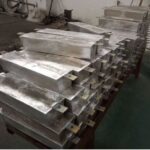Cementitious waterproofing is a popular and effective method for protecting structures from water damage. It involves applying a cement-based coating or slurry to surfaces to create a barrier against water infiltration. This method is commonly used in areas prone to high moisture levels, such as basements, foundations, and swimming pools. To ensure the best results and longevity of the waterproofing application, it’s essential to follow best practices throughout the process. This guide outlines key strategies to achieve optimal performance in cementitious waterproofing applications.
1. Surface Preparation
Thorough Cleaning
Before applying any waterproofing material, proper surface preparation is crucial. The surface must be clean, dry, and free of contaminants such as oil, grease, or dust. Use a pressure washer or a wire brush to remove any loose particles and debris. For stubborn residues, a chemical cleaner might be necessary. Ensure the surface is completely dry before proceeding with the application, as moisture can affect the adhesion of the waterproofing material.
Surface Repair
Inspect the surface for cracks, holes, or other defects. These should be repaired before applying the waterproofing. Use a suitable repair mortar or patching compound to fill in any imperfections. Ensure that repairs are fully cured and smooth before proceeding with the waterproofing application. Proper surface preparation helps in achieving a uniform application and prevents water from seeping through any untreated areas.
2. Material Selection
Choosing the Right Product
Select a cementitious waterproofing product that is suitable for the specific application and environmental conditions. Consider factors such as the level of water exposure, the type of surface, and the required thickness of the coating. Concrete Repair materials are available in various formulations, including coatings, slurries, and membranes. Consult product data sheets and manufacturer recommendations to ensure compatibility with your project requirements.
Mixing and Application
Follow the manufacturer’s instructions for mixing the waterproofing material. Accurate mixing ratios are essential for achieving the desired consistency and performance. Use clean tools and equipment to avoid contamination of the mix. The consistency should be thick enough to cover the surface uniformly without sagging. Apply the material using a brush, roller, or trowel, depending on the product and surface characteristics.
3. Application Techniques
Uniform Coating
Apply the waterproofing material in a uniform layer to ensure consistent protection. Avoid applying too thick or too thin layers, as this can affect the performance and durability of the coating. Multiple coats may be necessary, depending on the product specifications and the surface condition. Allow each coat to dry thoroughly before applying the next one. This helps in achieving a strong bond between layers and enhances the overall waterproofing effectiveness.
Proper Curing
Curing is an essential step in the waterproofing process. Proper curing helps in achieving the maximum strength and durability of the coating. Follow the manufacturer’s recommendations for curing times and methods. In general, keep the coated surface moist for the recommended curing period to prevent cracking and ensure optimal performance. This can be achieved by covering the surface with wet burlap or using a curing compound.
4. Quality Control
Inspection
Regular inspection of the waterproofing application is important to ensure that the work meets quality standards. Check for any signs of defects, such as bubbles, cracks, or uneven coverage. Address any issues promptly to avoid compromising the effectiveness of the waterproofing system. Conduct a final inspection after the curing period to confirm that the coating is intact and performing as expected.
Testing
Perform water tests to verify the effectiveness of the waterproofing application. This can involve applying water to the surface and checking for any signs of leakage or dampness. Ensure that the waterproofing system is functioning properly before considering the project complete. Testing helps in identifying any potential issues and allows for corrective measures to be taken if needed.
5. Maintenance and Longevity
Regular Inspections
Regular maintenance is key to extending the lifespan of the waterproofing system. Schedule periodic inspections to identify any signs of wear, damage, or deterioration. Promptly address any issues to prevent water infiltration and maintain the effectiveness of the waterproofing barrier. Regular maintenance helps in preserving the integrity of the system and preventing costly repairs in the future.
Reapplication
Over time, the performance of the waterproofing system may degrade due to environmental factors and wear. Reapplication of the waterproofing material may be necessary to maintain optimal protection. Follow the manufacturer’s guidelines for reapplication intervals and procedures. Proper reapplication ensures continued protection and helps in extending the service life of the waterproofing system.
By adhering to these best practices for cementitious waterproofing applications, you can ensure effective and long-lasting protection for your structures. Proper surface preparation, material selection, application techniques, quality control, and maintenance are all crucial elements in achieving the best results. Following these guidelines will help in creating a reliable waterproofing system that safeguards your property from water damage and extends its longevity.


